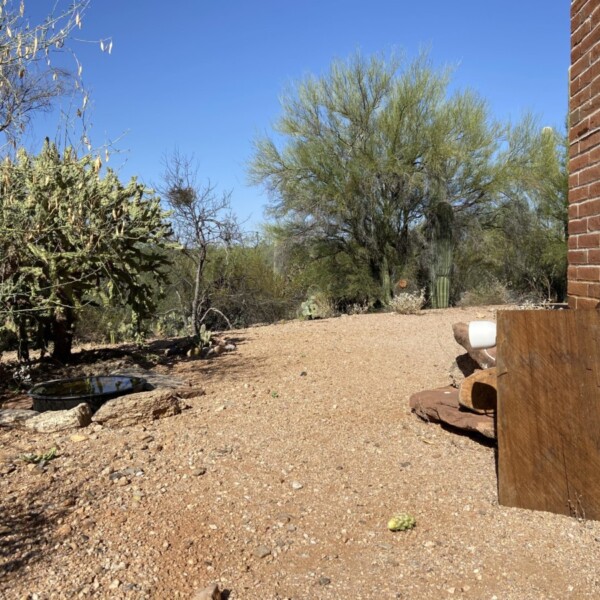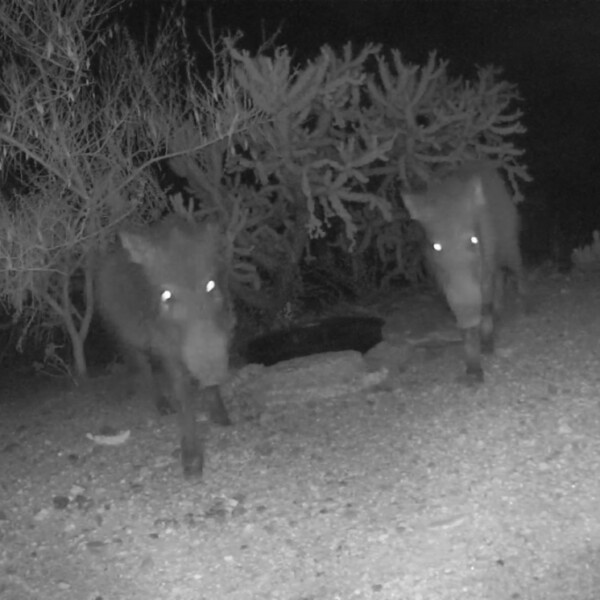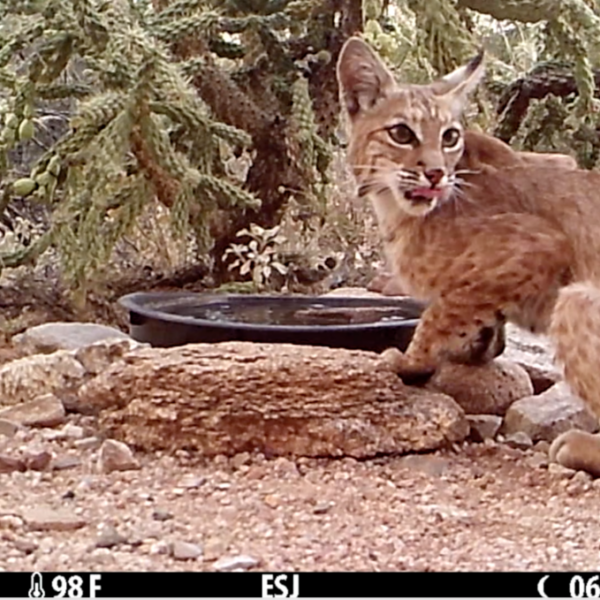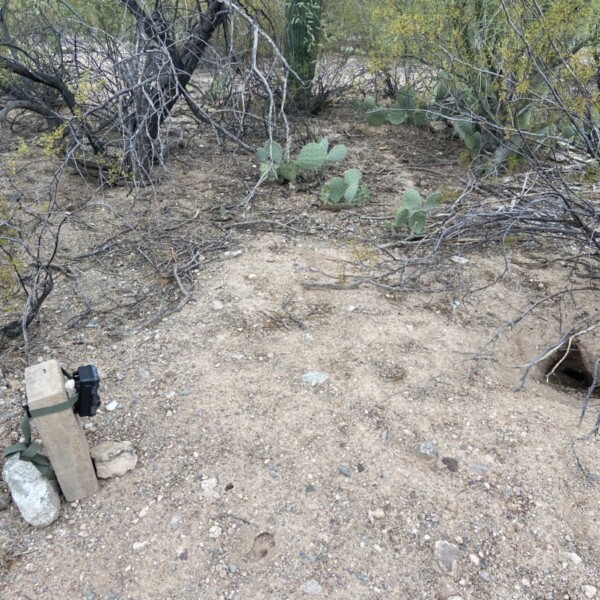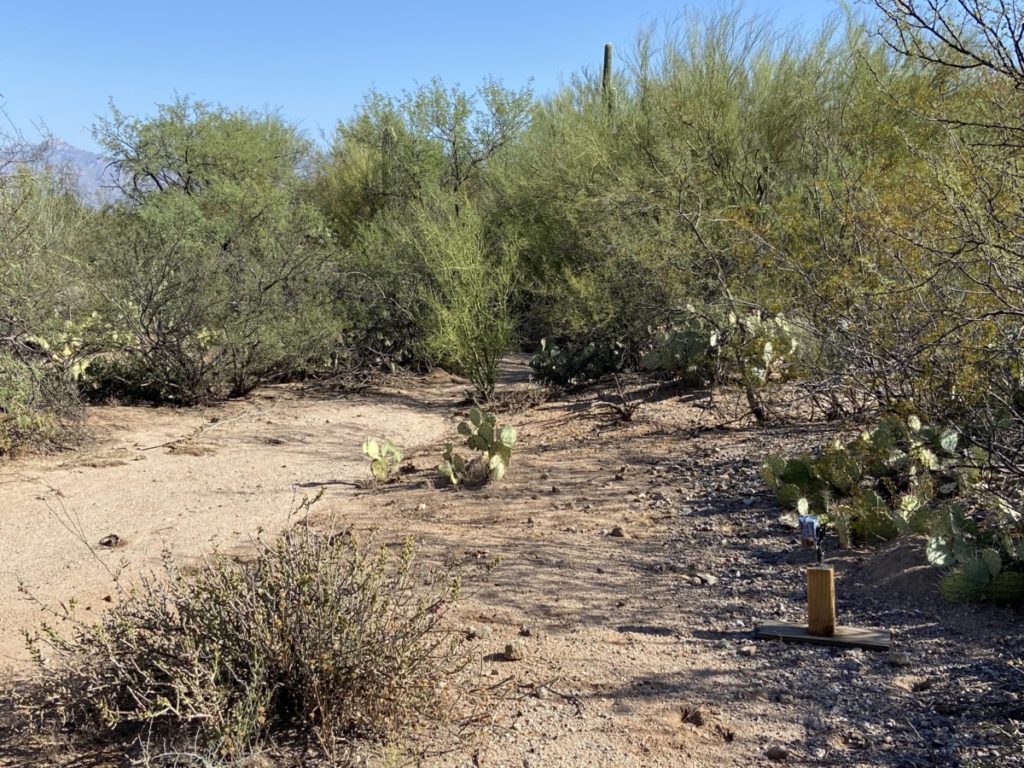Choosing a location for a wildlife camera in your backyard is a really fun process but may require some trial and error to get just the right perspective of animals on the move around your home. I’ve experimented with cameras in many locations around my house in the Sonoran Desert and share what I learned about different types of backyard camera locations. Check out our previous blog posts for information on how to choose a wildlife camera that’s right for you, how to set up a wildlife camera, and how to check them.
Close to Water
As we all know so well, the desert is HOT and dry much of the year—making a water source a great draw for wildlife species large and small. To get a good perspective of animals when they come to drink or bathe (remember my bathing badger?), I recommend mounting the camera 1-2 feet above the ground and far enough back to record the animals approach the water. It is best to use a no-flash setting for your camera at night or many species will be repelled by the camera’s emitted light.
Above a Burrow
Burrows of any size are fascinating to watch with a wildlife camera because you’ll no doubt see the animal that lives in the hole emerge, but also are likely to see potential predators sniff around too. My burrow camera is strapped to a cement block about 5 feet away from a large burrow under a creosote bush and I see a parade of all kinds of animals moving across this patch of desert.
Near a Bird Feeder
If you have a hummingbird feeder, a camera mounted nearby is likely to witness not only the amazing variety of hummingbirds that live in the Sky Island region, but also Gila woodpeckers, verdin, and migratory and nectivorous bats like the lesser long-nosed bat that migrates northwards from Mexico during the summer to follow the flowering of saguaro cactus and agave.
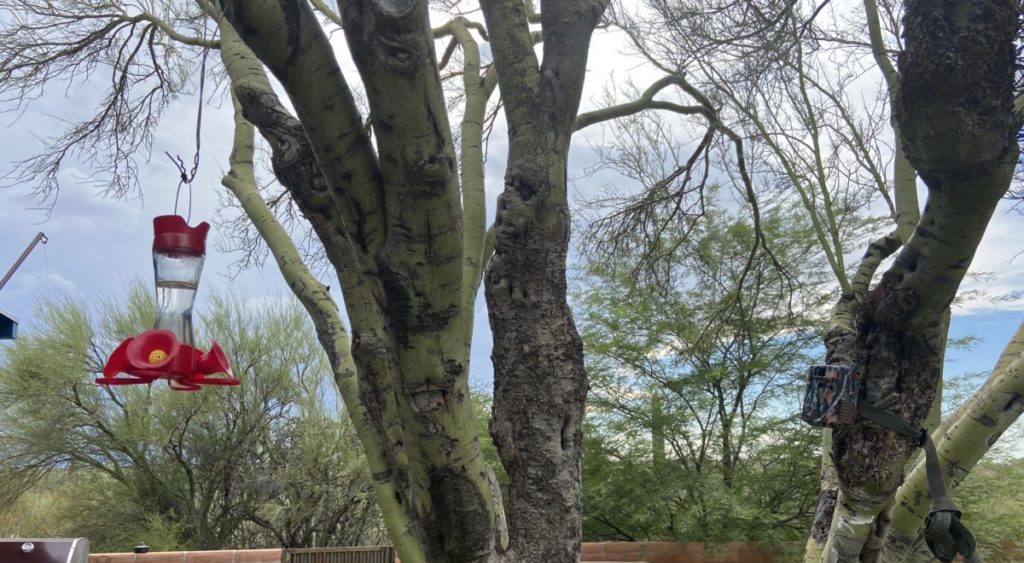
The view from a camera mounted in the nearby Palo Verde tree offers a nice perspective of lesser long-nosed bats that visit at night during the summer.
In a Wash
If you have a frequently traveled wildlife path like a game trail or wash, it’s a terrific place to watch animals on the go. I have a Browning camera mounted about 1 foot off the ground on a wooden stand with an attachment that the camera twists onto (like a tripod mount). From this perspective, I see a nearly constant parade of coyote, bobcats, birds, cottontails, lizards, and my favorites—badgers and hooded skunks.


